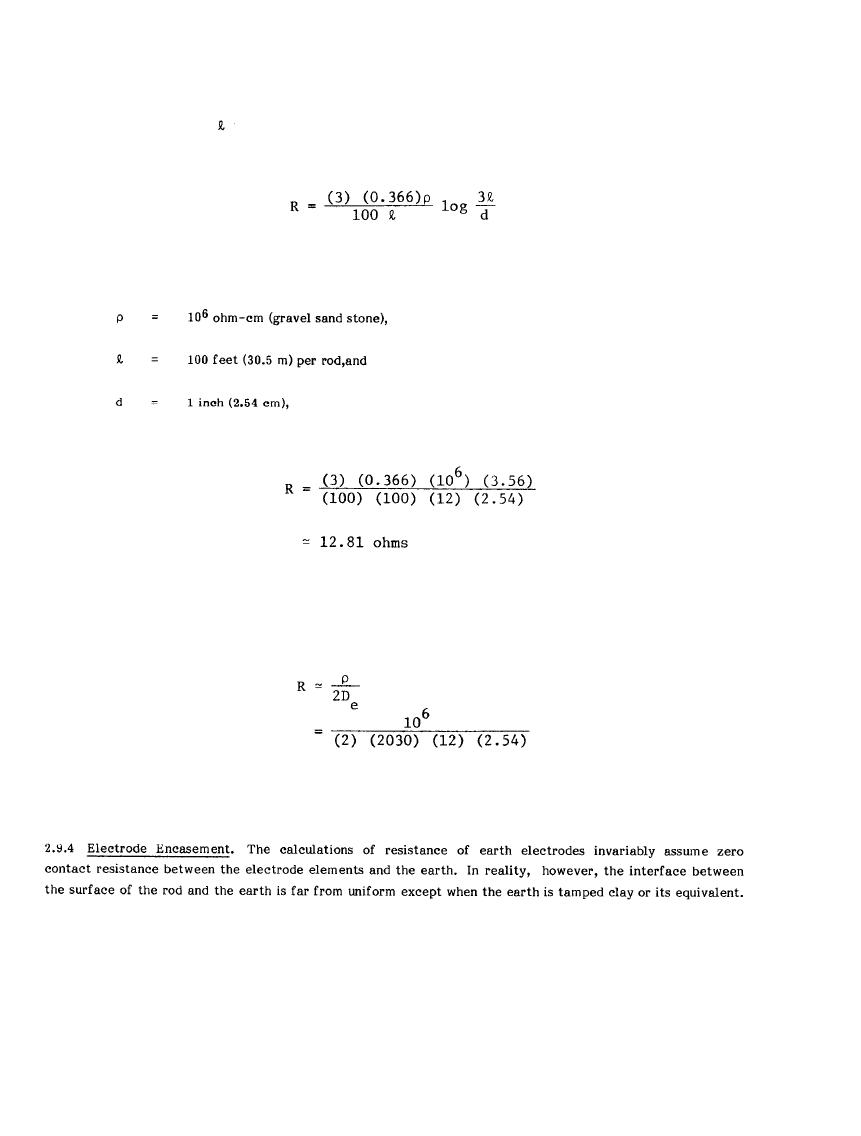

Custom Search
|
|

|
||
 MIL-HDBK-419A
Chemical treatment is limited in its effectiveness, however. Consider, for example, a square array of
100 ground rods of length
with spacings of twice the length of a rod. The resistance to earth (using an
extrapolated value of 3 for K) from Figure 2-12 is (see also Equations 2-16 and 2-26)
Assuming that
then
The upper bound on the effectiveness of chemical enhancement can be illustrated by determining the resistance
to earth of a metal electrode which would completely fill the volume of earth (1800 x 1800 x 100 ft., i.e., 550 x
550 x 30 m) occupied by the above array of ground rods. The effective diameter, De, of the equivalent plate
would be 2030 feet (619 m), and its resistance to earth would be (2-3):
(2-76)
= 8 ohms
The most that chemical enhancement could reduce the resistance of this large array would be by a factor of
1.58.
high. Encasing the electrode in conductive mastic or conductive concrete is one approach to improving the
contact between the electrode and the earth. Effects of local variations or moisture content will also be
reduced and stabilized, if the encasement material absorbs and holds moisture.
2-62
|
 |
|
 |
||